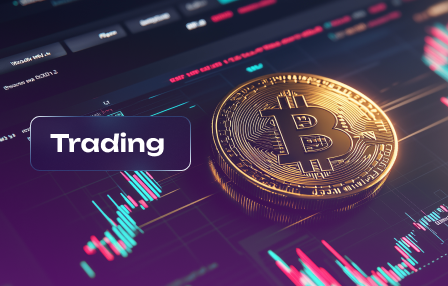OTC vs. Exchange Trading – Key Differences Explained
March 28, 2025
Engaging with different market structures demands a keen awareness of their unique traits. One cannot overlook the significant variances in liquidity, risk exposure, and regulatory frameworks that define these environments. Traders seeking to optimize their strategies must grasp how these systems operate, especially when considering the implications for investment outcomes.
Liquidity stands as a key factor separating these two avenues. In one setting, traders encounter a centralized system offering greater volume and depth, which often translates into tighter spreads. Conversely, the decentralized approach may present challenges in execution speed and price consistency due to lower trading volumes.
Risk management emerges prominently when contrasting regulatory oversight. The former operates under stringent guidelines designed to protect participants, while the latter frequently lacks such comprehensive rules. This discrepancy influences not only the security of investments but also shapes the overall market behavior that traders must navigate.
These key differences impact decision-making processes significantly. Understanding where each option fits within your risk tolerance and strategic objectives can lead to more informed choices and potentially enhanced performance in the markets.
Market Structure Comparison
Focus on regulation and market integrity. On centralized platforms, robust regulatory frameworks enhance transparency and investor protection. Participants benefit from standardized practices, ensuring trust in the price formation process. In contrast, decentralized environments may lack such oversight, potentially exposing traders to higher risks associated with fraud or market manipulation.
Assess liquidity variances. Centralized venues typically offer superior liquidity due to a larger pool of participants and more significant trading volumes. This environment enables quicker executions and narrower spreads. On the flip side, less regulated markets might present limited liquidity, resulting in increased slippage and adverse price movements during transactions.
Evaluate risk profiles. In regulated settings, the presence of intermediaries often reduces counterparty risk. These entities perform due diligence on participants, thereby enhancing overall security. Conversely, decentralized markets can carry heightened risks related to counterparty default or system vulnerabilities that may not be evident at first glance.
Understand key operational differences. Centralized exchanges operate with clear rules regarding order matching and trade execution, providing users with predictable outcomes. In decentralized platforms, processes can vary significantly, leading to potential confusion about trade protocols and execution timelines.
Recognize implications for strategy development. Traders should tailor their strategies according to the chosen environment. High-frequency strategies may flourish in liquid, regulated markets but face challenges in less transparent venues where execution quality may suffer.
Acknowledge the role of technological advancement. Centralized exchanges often invest heavily in technology to optimize performance. This investment translates into reduced latency and enhanced user experience. In contrast, some decentralized platforms may struggle with scalability issues due to infrastructure constraints.
In summary, understanding these structural elements is crucial for traders aiming to maximize efficiency and minimize exposure within various market contexts.
Liquidity Levels Explained
For optimal market engagement, understanding liquidity is crucial. Assess liquidity levels before entering any position to mitigate risk effectively.
- Market Depth: Evaluate the order book. A deeper book indicates higher liquidity, meaning larger orders can be executed without significant price impact.
- Trade Volume: High trading volumes often correlate with better liquidity. Analyze average daily volume to gauge potential slippage on large trades.
- Bid-Ask Spread: Narrow spreads signify high liquidity. Wider spreads can indicate reduced activity, increasing costs during execution.
In less regulated markets, participants face greater risks due to potential price manipulation. Verify the regulatory framework surrounding your chosen platform; this influences both security and liquidity.
- Assess Risk Tolerance: Align strategies with your risk profile. Higher liquidity typically reduces execution risk.
- Diversify Instruments: Engage in various assets to spread exposure and enhance overall liquidity.
- Regular Monitoring: Keep an eye on market conditions. Sudden changes can impact liquidity drastically.
Adapting your approach based on these factors will lead to more informed decision-making and improved outcomes in your financial endeavors.
Cost Implications Analyzed
Consider transaction fees as a primary factor in evaluating market options. Exchange platforms typically charge a percentage of the trade value, often leading to higher costs for smaller transactions. Alternatively, decentralized venues may impose lower or even no fees, appealing to cost-conscious participants.
Understand that market makers influence pricing structures significantly. In regulated environments, they manage liquidity and can create tighter spreads, reducing overall expenses for participants. Conversely, in less regulated settings, the lack of oversight may result in wider spreads, increasing the cost burden on traders.
Risk management practices differ across venues. A structured environment usually offers better tools for mitigating risks, including stop-loss orders and margin trading options. However, these features may come at a premium. Evaluate whether the additional costs align with your risk tolerance and trading strategy.
Liquidity levels play a critical role in determining costs. Higher liquidity generally leads to lower execution costs due to tighter spreads and reduced slippage. Ensure you assess market depth when choosing where to execute trades; shallow markets can result in unfavorable pricing and increased transaction expenses.
Regulatory frameworks impact operational costs too. Compliance requirements can lead to increased overhead for exchange-based systems, which might be passed on to users through elevated fees. On the flip side, less regulated platforms may offer cheaper services but expose participants to greater risks and potential losses.
In summary, analyze each venue’s fee structure, liquidity conditions, and associated risks carefully before making decisions. The right choice hinges on aligning your trading habits with these cost implications while balancing your strategy and financial goals.
Regulatory Environment Insights
Understanding the regulatory framework is key for participants in both over-the-counter and centralized platforms. Regulations can significantly influence liquidity and risk profiles associated with different marketplaces.
In centralized venues, robust oversight typically leads to enhanced transparency and security, which often results in increased liquidity. Regulatory bodies establish stringent rules that protect investors, promote fair practices, and ensure market integrity. Participants benefit from these protections but face compliance costs that may affect their trading strategies.
Conversely, less regulated environments present unique challenges. While they may offer greater flexibility and lower barriers to entry, such venues come with higher risks due to the potential for fraud and lack of recourse in disputes. This environment can deter institutional participation, impacting overall liquidity levels.
For traders, staying informed about regulatory changes is crucial. As authorities adapt to evolving market conditions, new rules can emerge that affect trading practices, operational costs, and risk management strategies. Proactive engagement with compliance frameworks not only mitigates risk but also positions traders advantageously in the market.
The interplay between regulation and market structure shapes participant behavior. A well-regulated space fosters confidence among traders, attracting more participants and enhancing liquidity, while poorly regulated environments may lead to volatility and reduced participation.
Ultimately, understanding these dynamics equips traders with the insights needed to navigate their respective markets effectively. Prioritizing regulatory awareness is essential for optimizing trading outcomes and managing associated risks.
Trade Execution Processes
For optimal execution, understand the processes inherent to each trading environment. In organized venues, trades are executed via automated systems that match orders based on pre-defined rules, ensuring speed and transparency. Conversely, in decentralized markets, the execution relies heavily on negotiation between parties, which can introduce variability and potential delays.
Liquidity plays a pivotal role in trade execution. Higher liquidity typically results in tighter spreads and quicker order fulfillment. On the contrary, illiquid conditions might lead to significant price fluctuations during execution. Therefore, traders should prioritize their entry points and timing to manage risks effectively.
Regulatory frameworks influence these processes substantially. Centralized platforms adhere to strict guidelines that govern market behavior, promoting a stable environment for participants. Meanwhile, less regulated platforms may offer greater flexibility but expose traders to heightened risks due to lack of oversight.
Selecting the right environment for trade execution hinges on your strategy and risk tolerance. Evaluate liquidity levels alongside regulatory aspects to make informed decisions that align with your trading goals.



